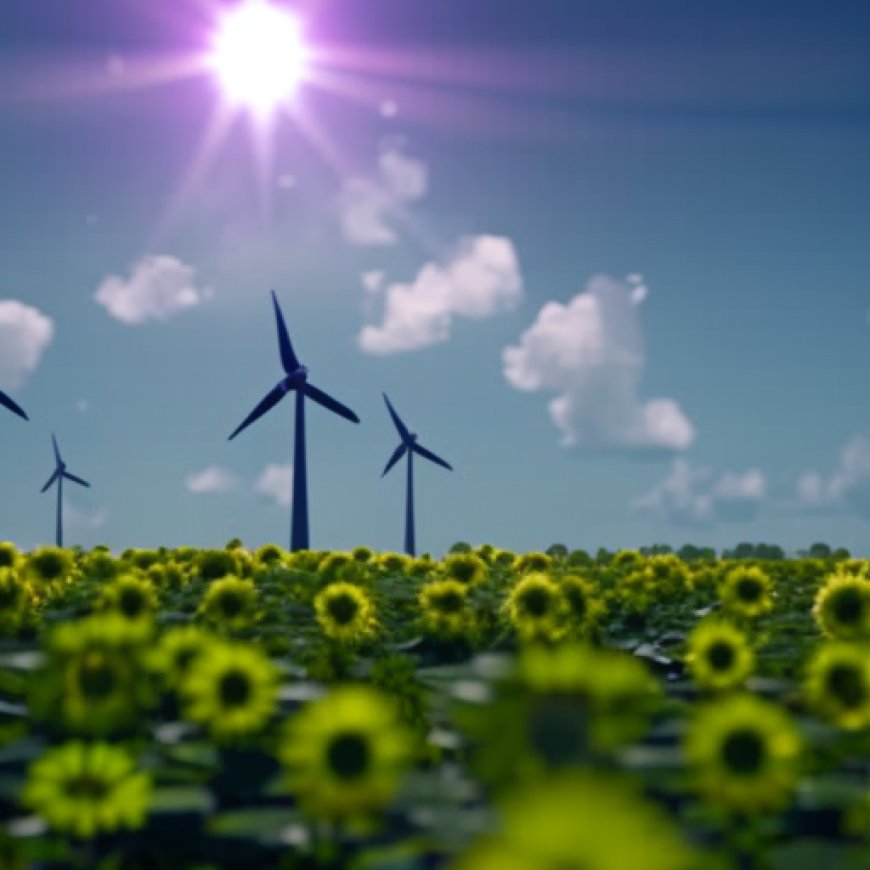Sungrow Shares 10 Major Technological Trends in Renewable Energy Industry


Sungrow Shares 10 Major Technological Trends in Renewable Energy Industry
PR Newswire
SHANGHAI, June 14, 2024
SHANGHAI, June 14, 2024 /PRNewswire/ — Sungrow, the global leading PV inverter and energy storage system provider, shared 10 major technological trends at the recent Ph.D Talk event in Shanghai. With an investment of 2.45 billion yuan (approximately 347 million) in R&D throughout 2023, the company stands at the forefront of technological innovation. Embracing their brand-new tagline “Bridge to a Sustainable Future”, Sungrow is dedicated to bridging the gap and making clean energy accessible to everyone.
Technological Trends
- The Application of New Semiconductor Devices
To achieve net-zero carbon emissions, advancements in energy generation, transmission, and conversion efficiency are crucial. Diamond has the potential to become the ultimate WBG semiconductor material for high-power electronics. - The Extended Utilization of Solid-State Transformer (SST) Technology and Medium-Voltage Photovoltaic (PV) Inverters
The medium-voltage PV power generation system based on SST technology offers a higher power density compared to traditional solutions. - Further Enhancement of Direct Current (DC) Voltage Level in PV Systems
The increase of DC voltage in PV systems not only increases power density and efficiency but also reduces infrastructure and maintenance costs. - Improving the Overall Lifecycle Efficiency of PV Power Plants through Digitization and AI
Sungrow has introduced the concept of DEPCO (Development, Engineering, Procurement, Construction, Operation), bringing about comprehensive digitization to renewable energy power plants. - “PE Agent,” a Power Electronic Designer Based on Large Language Model (LLM)
During the energy transition, AI intelligence will play an increasingly significant role. PE Agent can facilitate seamless communication between AI and AI, as well as between AI and humans. - High Voltage Direct Current (HVDC) Technology
HVDC systems provide faster active power flow control compared to the more established CSC-HVDC technology. - Source-Grid-Load-Storage Integration: Driving the Rapid Development of Energy Bases and Future Urban Construction
The construction strategy for the source-grid-load-storage operation mode in renewable energy integration can leverage multiple energy sources. - Grid-Forming (GFM) Technology
GFM technology provides rapid, accurate, and standardized dynamic responses to grid faults and disturbances. - Virtual Power Plants (VVPs)
VVPs are networks comprising small-scale energy-producing or storage devices that are aggregated to serve the electricity grid. - Green Hydrogen
The off-grid solar-hydrogen solution and the integration of hydrogen for complete energy self-sufficiency in residential buildings can further enhance energy efficiency.
SOURCE Sungrow Power Supply Co., Ltd.
SDGs, Targets, and Indicators in the Article
1. Which SDGs are addressed or connected to the issues highlighted in the article?
- SDG 7: Affordable and Clean Energy
- SDG 9: Industry, Innovation, and Infrastructure
- SDG 11: Sustainable Cities and Communities
2. What specific targets under those SDGs can be identified based on the article’s content?
- SDG 7.2: Increase substantially the share of renewable energy in the global energy mix.
- SDG 9.4: Upgrade infrastructure and retrofit industries to make them sustainable.
- SDG 11.6: Reduce the environmental impact of cities, including air quality and waste management.
3. Are there any indicators mentioned or implied in the article that can be used to measure progress towards the identified targets?
- Deployment of new semiconductor devices for energy generation, transmission, and conversion efficiency (indicator for SDG 7.2).
- Development and utilization of solid-state transformer (SST) technology and medium-voltage photovoltaic (PV) inverters (indicator for SDG 9.4).
- Increase in the overall lifecycle efficiency of PV power plants through digitization and AI (indicator for SDG 9.4).
- Advancements in power electronics design facilitated by AI intelligence (indicator for SDG 9.4).
- Integration of renewable energy sources and grid-forming technology for stable operation (indicator for SDG 11.6).
SDGs, Targets, and Indicators Table
| SDGs | Targets | Indicators |
|---|---|---|
| SDG 7: Affordable and Clean Energy | Increase substantially the share of renewable energy in the global energy mix (7.2) | Deployment of new semiconductor devices for energy generation, transmission, and conversion efficiency |
| SDG 9: Industry, Innovation, and Infrastructure | Upgrade infrastructure and retrofit industries to make them sustainable (9.4) | Development and utilization of solid-state transformer (SST) technology and medium-voltage photovoltaic (PV) inverters Advancements in power electronics design facilitated by AI intelligence |
| SDG 11: Sustainable Cities and Communities | Reduce the environmental impact of cities, including air quality and waste management (11.6) | Integration of renewable energy sources and grid-forming technology for stable operation |
Source: morningstar.com








